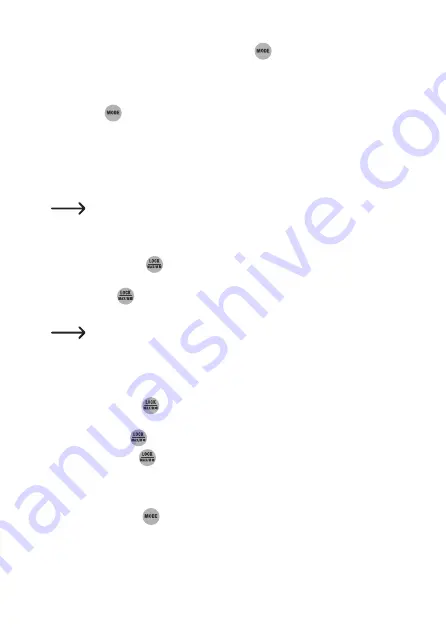
4. Select the “DO” operating mode by pressing the
button (3) until the “DO” symbol ap-
pears on the LC display (8).
5. Wait for ten to thirty minutes for the probe to polarise. The measured value displayed should
be approx. 101.7 % saturation. The probe is then fully polarised.
6. Press the
button to select the desired unit of measure.
7. Immerse the probe approx. 2 - 3 cm deep in the liquid to be measured. Move the tip of the
measuring probe back and forth in the liquid slightly in order to remove any air bubbles from
the surface of the membrane and to stabilise the measured value display. It may take some
time for the measured value to stabilise.
8. If the measured value lies outside the measurement range, “----” appears on the LC display.
The greater the temperature difference between the probe and the liquid to be tested,
the longer it will take for the measured value to stabilise. The time it takes to stabilise
may be anywhere from ten seconds to five minutes.
9. In order to retain the measured value on the LC display when the probe is removed from
the liquid, press the
button (9) to freeze the measured value. The “Lock” symbol (J)
appears on the LC display.
10. Pressing the
button again deactivates the data hold function and releases the meas-
ured value. The “LOCK” symbol (J) disappears from the LC display.
Automatic temperature compensation (ATC) ensures precise measurements even in
the case of variable temperatures in the liquid.
1
Displaying maximum/minimum values
1. The meter can display the maximum and minimum values of a measurement.
2. Press and hold the
button (4) until “MAX” (F) and “MIN” (F) flash together on the LC
display (8).
3.
Briefly press the
button to switch between the maximum and minimum values.
4. Press and hold the
button to leave the min/max value display. The “MAX” (F) and “MIN”
(F) symbols disappear from the LC display (8).
2
Switching temperature units
1. Press and hold the
button (3) in O2 operating mode for approx. 3 seconds to switch
between temperature units °C and ° F.
28






























